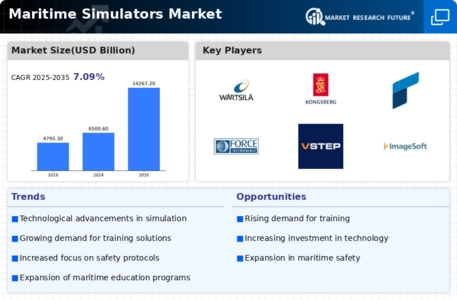Maritime Simulators Market Summary
As per Market Research Future analysis, the Maritime Simulators Market Size was estimated at 6712.48 USD Billion in 2024. The Maritime Simulators industry is projected to grow from 7188.39 USD Billion in 2025 to 14260.04 USD Billion by 2035, exhibiting a compound annual growth rate (CAGR) of 7.09% during the forecast period 2025 - 2035
Key Market Trends & Highlights
The Maritime Simulators Market is experiencing robust growth driven by technological advancements and increasing regulatory demands.
- Technological advancements in simulation are enhancing the realism and effectiveness of training programs.
- North America remains the largest market, while the Asia-Pacific region is emerging as the fastest-growing area for maritime simulators.
- The software segment holds the largest market share, whereas the hardware segment is witnessing the fastest growth in demand.
- Key market drivers include the growing demand for skilled maritime professionals and the need for regulatory compliance and safety standards.
Market Size & Forecast
| 2024 Market Size | 6712.48 (USD Billion) |
| 2035 Market Size | 14260.04 (USD Billion) |
| CAGR (2025 - 2035) | 7.09% |
Major Players
Kongsberg Gruppen (NO), CAE Inc. (CA), Transas (RU), Furuno Electric Co., Ltd. (JP), VSTEP (NL), Maritime Simulation Solutions (US), MTS (US), Wärtsilä (FI)

















